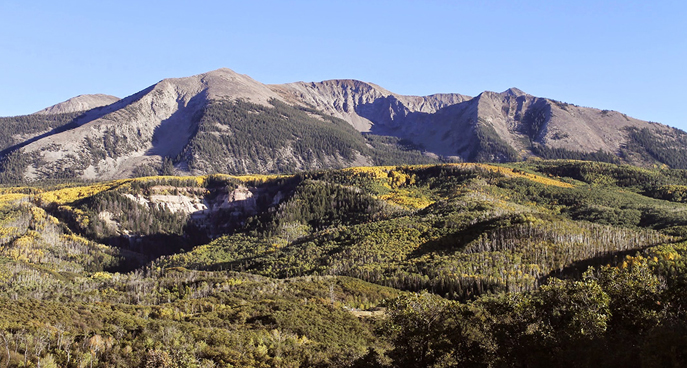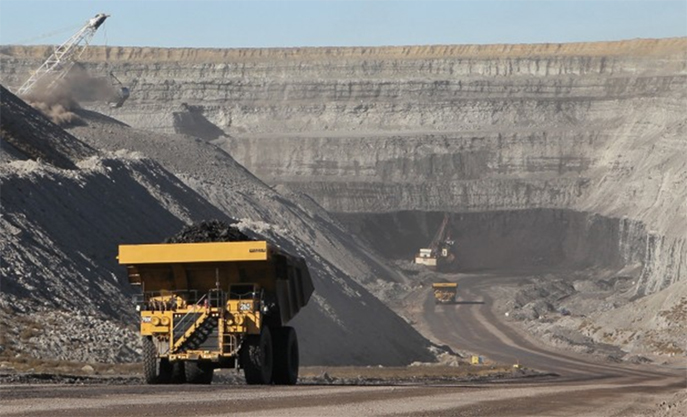Last Thursday, more than 130,000 Sierra Club members and supporters submitted comments to the Department of Interior and Bureau of Land Management (BLM) calling for strong action on climate by ending the federal coal leasing program. All told, more than 243,000 Americans called on the BLM to reform the broken and severely out of date coal program.
While BLM considers a large suite of reforms, the most important question BLM must answer is this:
Given what we know about the urgent need to reduce greenhouse gasses to stave off the worst effects of climate disruption, should the federal government still be in the business of selling coal?
The unequivocal answer, backed by more than 60 climate scientists, is no.
Continued federal coal leasing—and the massive emissions of carbon dioxide (CO2) and methane it causes—are fundamentally incompatible with the need for urgent action on climate, both to protect the one planet we’ve got and to meet our national carbon emission reduction goals and our international climate commitments.
Earlier this week, climate scientists from across the country echoed this call for strong action:
“We are scientists writing to urge the Department of the Interior to take meaningful action to fight climate change by ending federal coal leasing, extraction, and burning. The vast majority of known coal in the United States must stay in the ground if the federal coal program is to be consistent with national climate objectives and be protective of public health, welfare, and biodiversity.”[1]

Mount Gunnison, in the Sunset Roadless Area in Colorado. Photo by Ted Zukoski, courtesy of Earthjustice.
Through this Programmatic Environmental Impact Statement (PEIS) process, the BLM must finally acknowledge—for the first time in its history—that its federal coal leasing program perpetuates and exacerbates climate change.
Over the past several years, the BLM’s federal coal leasing program has been responsible for, on average, nearly 400 million tons of coal mining and burning every year—accounting for roughly 41 percent of all coal produced in the U.S.[2]
It’s shocking that for all of the forward-thinking policies that the Obama Administration has put in place—including the Clean Power Plan and its aim to reduce our reliance on coal-fired power—this administration still refuses to admit that the BLM’s decision to lease billions of tons of coal over the past seven years is a problem for our climate, even though the agency readily acknowledges that nearly all of that coal is destined for coal-fired power plants here and abroad.[3]
More than a year ago, Department of Interior Secretary Sally Jewell promised the American people “an honest and open conversation” about the federal coal program.[4] Any honest conversation on this topic must begin by acknowledging that the climate crisis we have created demands quick and urgent action. Recognizing this simple truth requires little more than basic math and listening to the government’s own climate scientists.
Dr. Christopher Field, an EPA climate scientist with more than 25 years studying climate change, filed a sworn declaration in support of President Obama’s Clean Power Plan that laid out the stakes in plain English:
“If the world is to limit the likelihood of exceeding 2°C over pre-industrial temperatures, the window for cost-effective action is narrow and rapidly closing. A delay of only a few years will increase the likelihood of missing the target as well as the cost and complexity of reaching it.”[5]
The Intergovernmental Panel on Climate Change (IPCC) puts the remaining global “carbon budget” at approximately 900 billions tons—that’s the total amount of CO2 that we can put into our atmosphere as a planet if we hope to avoid the most harmful, expensive, and irreversible effects of climate change.[6]
According to Dr. Field, we emitted approximately 2000 billion tons of CO2 over 250 years, but at 2014 emission rates, “we burn through the remaining budget of 900 billion tons of CO2 in only 24 years.” [7]
Scientists and governments across the globe agree. In the recent Paris Agreement, more than 180 nations, including the U.S., agreed to limit global warming to “well below” 2°C above pre-industrial temperatures, with a goal of limiting warming to just 1.5°C.[8]
Analysis published in the peer-reviewed journal Nature concluded that 92% of U.S. coal reserves—including reserves already under lease—must remain in the ground to have even a 50 percent chance of remaining below the 2°C threshold.[9] According to the Department of Interior, the approximately 7.75 billion tons of recoverable reserves of Federal coal currently under lease is estimated to be sufficient to continue production at current levels for more than 20 years.[10] And, as one recent study found:
“More recoverable coal is currently under lease than can safely be developed under a carbon budget that limits global warming to 2°C.”[11]
In order to stay within planetary carbon budgets to avoid worst effects of climate change, including surpassing irreversible climate “tipping points” beyond which preventing catastrophic climate disruption may become impossible, additional mining and burning of taxpayer-owned coal is simply untenable. It should not be news to anyone that fossil fuels must remain in the ground in order to fight climate change. Last year, President Obama famously used this logic to deny the Keystone XL tar sands pipeline, stating:
“If we’re going to prevent large parts of this Earth from becoming not only inhospitable but uninhabitable in our lifetimes, we’re going to have to keep some fossil fuels in the ground rather than burn them and release more dangerous pollution into the sky.”[12]
The Obama administration put a climate litmus test on one major fossil fuel project. Now, the Sierra Club and more than 130,000 members of the public are calling on this administration and the next one to do the same thing, but on far bigger scale and with far bigger climate consequences.
The BLM has the authority, opportunity, and imperative to make a real difference. It’s time to get the federal government out of the dirty business of leasing coal. Rather than prop up a dying coal industry, the BLM should instead work toward a clean energy economy and invest in a just financial transition and economic diversification for coal-reliant communities and workers.
While the agency’s immediate task is to analyze the federal coal program’s social, environmental, and economic impacts, that analysis can point in only one direction: the BLM should end federal coal leasing.
[1] Letter of Ken Cladiera, PhD, et. al to Secretary of Interior Sally Jewell, p. 1 (July 27, 2016).
[2] Recent federal production has fallen below 400 million tons per year, with further reductions expected this year. Department of Interior, 81 Fed. Reg. 17721 (Mar. 30 2016).
[3] Id.
[4] Secretary Sally Jewell, Speech at the Center for International Strategic Studies (March 17, 2015), available at https://www.doi.gov/news/pressreleases/secretary-jewell-offers-vision-for-balanced-prosperous-energy-future (last visited July 20, 2016).
[5] Declaration of Christopher Field, U.S. Environmental Protection Agency, at p.3, West Virginia v. EPA, Case No. 15-1363, Document #1586661, (D.C. Cir.) (filed Dec. 3, 2015).
[6] IPCC, Climate Change 2014: Synthesis Report, at 151 (2014).
[7] Declaration of Christopher Field, U.S. EPA, West Virginia v. EPA, Case No. 15-1363, Document #1586661, (D.C. Cir.) (filed Dec. 3, 2015) at 9-10.
[8] Paris Agreement, Article 2, FCC/CP/2015/L.9 (Dec. 12, 2015).
[9] Christophe McGlade & Paul Ekins, The Geographical Distribution of Fossil Fuels Unused When Limiting Global Warming to 2 [deg] C, Nature Vol. 517, pp. 187-190 (Jan. 7, 2015).
[10] Department of Interior, 81 Fed. Reg. 17721 (Mar. 30 2016).
[11] Next Gen America, PEIS Scoping Comment Letter, at 1 (July 28, 2016).
[12] The White House, Statement by the President on the Keystone XL Pipeline (Nov. 6, 2015), available at https://www.whitehouse.gov/the-press-office/2015/11/06/statement-president-keystone-xl-pipeline.
